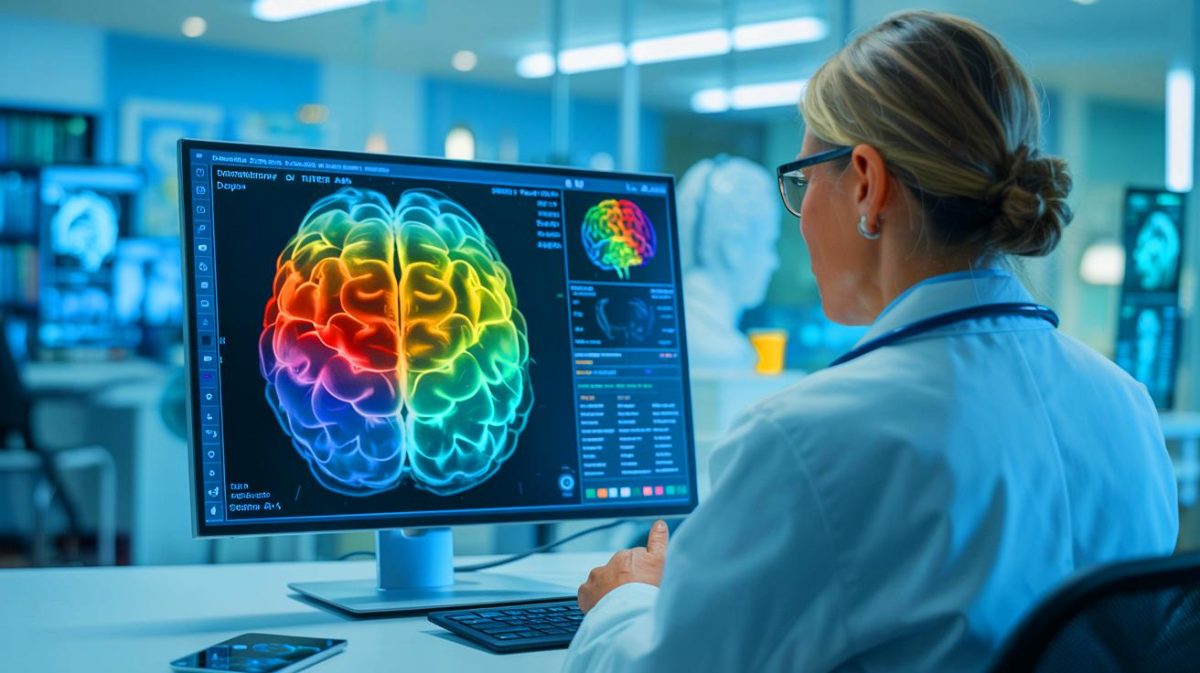| IN A NUTSHELL |
|
In a groundbreaking development, Mayo Clinic researchers have unveiled an innovative AI tool called StateViewer, capable of diagnosing nine types of dementia using just one common brain scan. This technological marvel promises to revolutionize dementia diagnosis by providing faster and more accurate results than traditional methods. The significance of this tool lies in its potential to transform how clinicians approach dementia, offering hope for millions affected by these debilitating conditions. By leveraging sophisticated machine learning algorithms, StateViewer stands at the forefront of medical technology, paving the way for a future where early and precise diagnosis is within reach for all.
Understanding StateViewer’s Advanced Capabilities
The StateViewer tool operates by analyzing a fluorodeoxyglucose positron emission tomography (FDG-PET) scan, which highlights how the brain utilizes glucose—a critical marker of brain activity. By comparing these scans to an extensive database of confirmed dementia cases, the AI can identify distinct patterns associated with various dementia types. For example, Alzheimer’s disease affects memory and cognitive processing areas, while Lewy body dementia targets regions involved in attention and motor functions. Frontotemporal dementia, on the other hand, impacts language and behavior-related areas.
StateViewer presents its findings through color-coded brain maps, enabling even general clinicians to grasp complex dementia patterns visually. Dr. David Jones, a neurologist at the Mayo Clinic, emphasized the tool’s capacity to simplify the diagnostic process, allowing for more informed treatment decisions. “Every patient who walks into my clinic carries a unique story shaped by the brain’s complexity,” Dr. Jones noted, underscoring the tool’s potential to transform patient care.
Tackling the Growing Dementia Challenge
With over 55 million people worldwide living with dementia and 10 million new cases annually, the burden of this condition is immense. Alzheimer’s disease alone ranks as the fifth-leading cause of death globally. Traditional diagnostic methods for dementia involve a battery of tests, including cognitive assessments, imaging, and consultations, making the process arduous and time-consuming. Despite these efforts, accurately distinguishing between overlapping dementia types remains challenging.
Dr. Jones, in collaboration with AI engineer Leland Barnard, recognized the urgent need for a more efficient diagnostic tool. “As we were designing StateViewer, we never lost sight of the fact that behind every data point and brain scan was a person facing a difficult diagnosis and urgent questions,” Barnard reflected. Their work highlights the critical role machine learning can play in enhancing clinical medicine by providing real-time insights and guidance to physicians.
The Potential of StateViewer in Clinical Settings
StateViewer’s introduction marks a significant step forward in the fight against dementia, offering a scalable solution that could democratize expert-level diagnostic support. The technology has been rigorously tested across 3,600 brain scans, demonstrating an impressive 88% accuracy rate in identifying the correct type of dementia. This represents a threefold increase in diagnostic accuracy compared to standard workflows.
Mayo Clinic researchers are optimistic about expanding StateViewer’s use across diverse clinical environments. By doing so, they hope to facilitate earlier interventions and improve patient outcomes significantly. The tool’s success in various settings could redefine the treatment landscape for dementia, providing a model for integrating AI into everyday clinical practice.
Looking to the Future of Dementia Diagnosis
As StateViewer continues to evolve, its potential impact on healthcare is profound. By enabling quicker and more precise diagnoses, the tool offers hope for earlier intervention and treatment, potentially altering the progression of these diseases. The study’s publication in the journal Neurology underscores the tool’s scientific credibility and its promise in reshaping dementia care.
As new treatments for dementia emerge, tools like StateViewer will be crucial in ensuring timely and accurate diagnoses. This innovation raises an important question: How will AI-driven diagnostics reshape our approach to complex medical conditions in the years to come?
Did you like it? 4.4/5 (25)







Wow, 88% accuracy? That’s impressive! 🎉
How does StateViewer compare to traditional diagnostic methods in terms of speed?
Is this AI tool available for use outside of the Mayo Clinic?
Avec une précision de 88%, il y a encore 12% de marge d’erreur. Comment est-ce géré? 🤔
Merci à l’équipe Mayo Clinic pour cette avancée révolutionnaire!
Je reste sceptique. Peut-on vraiment faire confiance à une IA pour diagnostiquer des maladies aussi complexes?
Où peut-on voir des exemples de ces cartes cérébrales colorées?
Comment l’IA gère-t-elle les cas de démence atypiques?
Est-ce que les médecins devront suivre une formation spécifique pour utiliser cet outil?